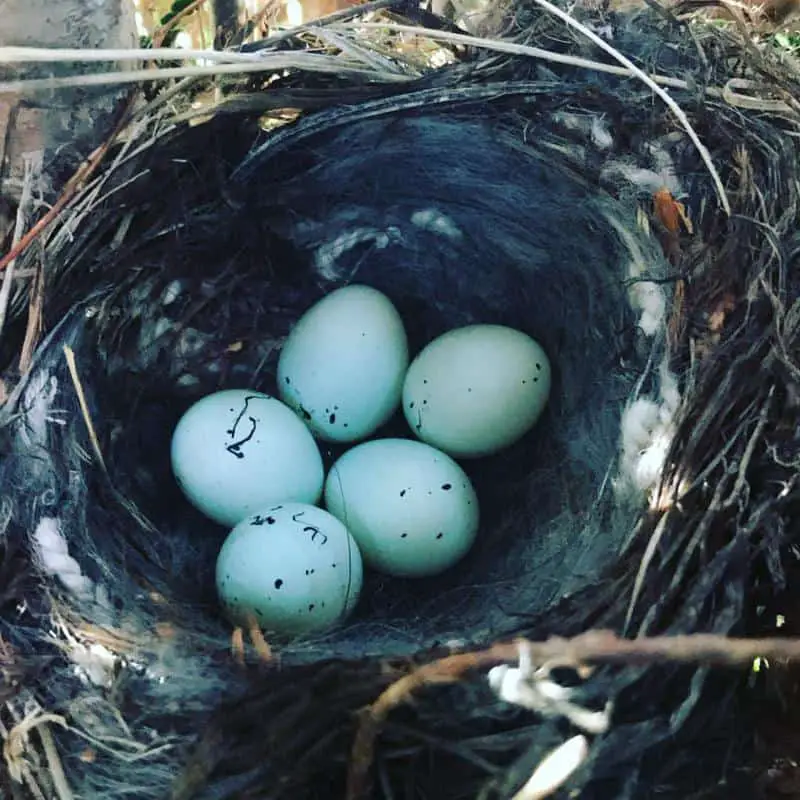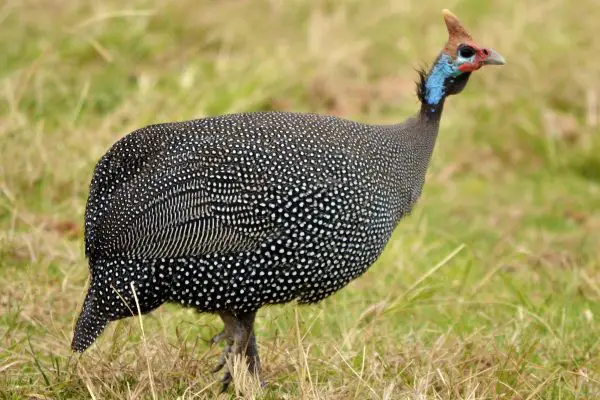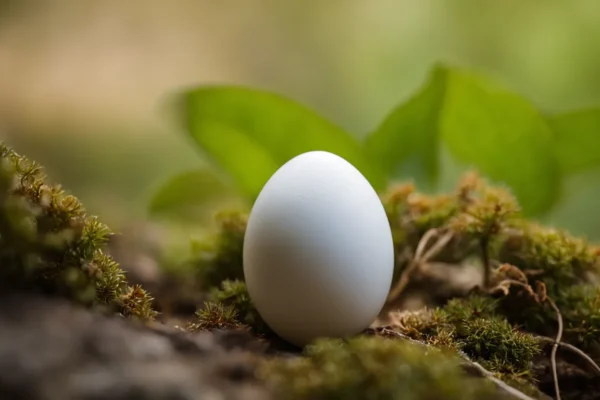The process by which the embryo within the egg develops into a chick is known as “egg hatching.” It is brought on by outside variables including exposure to light and temperature.
Different kinds will hatch at different times; it might take a few days to many weeks, depending on the type of bird and the surrounding circumstances, especially the humidity levels.
Because each species hatches its eggs differently, there is a large variety of potential hatching timeframes. Some bird species bury or store their unhatched eggs underground where they may incubate for a longer amount of time without external disruptions like predators or changing weather. Other bird species keep their eggs warm with body heat and deposit their eggs in nests.
It is not an easy question to answer, how long does it take for bird eggs to hatch? Numerous variables are involved, including the kind of bird and the weather.
This article will go over factors that affect the hatching time of different kinds of bird eggs.
The Process of Incubation and Hatching
The procedure that occurs after the eggs are deposited is known as incubation. At this point, the embryo grows and hatches. If the eggs are being artificially incubated, they are kept warm either by the mother bird or in an incubator.
The length of time it takes for the baby to hatch will depend on the egg’s temperature. The chick may not survive if the temperature is too high because it will hatch too soon. The chick may perish if the temperature drops too far and it will hatch later than expected.
When the eggs hatch depends on the temperature during incubation. The optimal temperature range is between 37 and 39 degrees Celsius, or 99 and 102 degrees Fahrenheit.
The chicks may not survive if the temperature is too high because they will hatch early. Should it be very low, they may hatch later and may even perish.
Depending on the kind of bird, the incubation period also varies. While some birds, like penguins, may incubate their eggs for up to two months, others, like ducks, have a shorter incubation period of around 21 days.
With the exception of cuckoos, the chicks must be fed and cared for by their parents once they hatch. Since the chicks won’t be able to live without assistance until they are around four weeks old, this procedure is essential.
The process of egg hatching has a set pattern. After first emerging from the eggshell, the embryonic chick progressively finishes the process by releasing itself from the remaining egg membranes.
The yolk sac, an essential source of nutrition for the developing bird, will be absorbed by the chick.
Depending on the kind of bird and the surrounding circumstances, the time it takes for bird eggs to hatch might vary. Although it might take anything from 12 hours to many weeks or even months, the procedure usually takes two weeks. In order to really understand this incredible process, be sure to pay great attention to every aspect if you are ever fortunate enough to observe an egg hatching.
Types of Birds and Their Incubation Times
The primary factor affecting the hatching time of bird eggs is their species, among many others. Every kind of bird hatches at a different rate.
The common bird species and their incubation durations are shown below.
Editor’s note: The eggs of some of these species take a few days to hatch. For instance, it takes an additional two to three days for barn owl eggs to hatch once they are incubated.
12–14 days for American robins

The American robin is a songbird of modest size. Its head and back are gray, while its breast is reddish-orange in color. They are often located in wide-open spaces like gardens, parks, and fields.
10–14 days for a house sparrow

The little bird known as the house sparrow is well-known for its singing. Originating in Europe, this species was brought to North America during the 1800s. Other than Antarctica and a few islands, they are present across the earth.
31-32 days Barn owl

The nocturnal Barn owl is a predatory bird of prey distinguished by its heart-shaped facial disks. Save for Antarctica, they are present over the whole planet.
American kestrel: 28–31 days

North America, Central America, and South America are home to the little falcon known as the American kestrel. These birds are seen hovering close to power wires or perched on telephone poles.
35 days Bald Eagle

The bald eagle, ah. The emblem of America. These birds stay in their nests and maintain the temperature of their eggs for the whole 35-day incubation period. Throughout North America, they are located close to huge bodies of water.
12-13 days Black-capped chickadee

Small songbirds, like the black-capped chickadee, are year-round residents of North American woods and woodlands. These birds are renowned for their social behavior and intellect.
18 days Rock Pigeon

In North America, the most common species of pigeon is the rock pigeon. Typically, one may see them perched on large buildings, bridges, and other architectural features.
28–35 days for Canada geese

Large species of duck found in portions of Europe and North America is the Canada goose. They may be observed close to rivers, lakes, and ponds and are well-known for their protracted migrations.
28 days Mallard

The most prevalent duck in North America is the mallard. They graze on aquatic plants and insects and may be found close to lakes, rivers, and ponds.
65-75 days Penguins

These cute little birds use a pebble nest to hatch their eggs. Because they take turns keeping their egg warm for so long, the parents of penguins never leave it alone.
21 days Chickens

The chicken, which is perhaps the most widespread bird in North America, takes 21 days for its eggs to hatch. All around the globe, these birds are maintained as tamed pets and are valued for their eggs and meat.
As you can see, there is a great deal of variation in how eggs hatch. We will examine the variables influencing the time ranges in the next section.
Interesting fact: Some birds don’t even bother to incubate their own eggs. The cuckoo bird connives to get other animals to do tasks for it. The remaining eggs in the nest are picked up and thrown aside by the chicks once they hatch. Isn’t nature wonderful?
Factors Influencing the Hatching Time
The process of hatching may be influenced by several circumstances. As a result, we gave a range of times for the majority of chicks to hatch. Numerous extrinsic elements are involved in establishing the duration of incubation.
Among them are:
The kind and variety of birds
The pace at which the eggs of various birds hatch varies. Larger birds take longer to hatch since it takes longer for them to fully grow within the egg and become independent.
The size of the bird directly affects when it hatches. The length of the incubation period increases with bird size.
Another major element influencing hatching time is the breed of bird. Aggressive breeds are those that will attempt to hatch from their eggs as quickly as possible.
The Degree of Heat
The duration required for bird eggs to hatch will depend on the temperature of the incubation space.
Cooler temperatures may impede or even halt the process completely, whereas warmer temperatures, between 99 and 102 degrees Fahrenheit (37 and 39 degrees Celsius), encourage quicker growth and hatching.
This occurs as a result of the egg’s self-regulating ability to hold the embryo in a latent state until it senses that circumstances are right. Nature naturally doesn’t want newborn birds to emerge when it’s so cold outside that they would freeze, as they emerge nude.
Temperature of Humidity
The amount of moisture that growing embryos have access to as well as the pace at which eggshells absorb water are both influenced by humidity. Because they are permeable, eggs lose weight over time rather than having a hard shell.
Chicks will lose too much or too little weight if the humidity is too high or low, and their breathing will become impaired. An egg has a lower chance of hatching the more trapped air it contains. This is due to the fact that a larger amount of air occupies space that the growing embryo might utilize.
The Dimensions and Mass of a Single Egg
There are several reasons why some eggs are smaller than others, including the age and food of the bird (see the differences between wild and domesticated birds). Additionally, heavier eggs hatch later than lighter ones.
The way embryos develop within their eggs is the reason this occurs. Since the embryo is essentially a developing ball of cells, it must consume so much food that, in the event that the egg were too small, the embryo would run out of energy before hatching. However, if they occupy too much space, they will use more than what is available, which can also hinder hatching.
The Duration of the Egg’s Laying
The likelihood of an egg hatching decreases with age. This is due to the fact that as time passes, the egg’s water content increases and the embryo within desiccates.
Consequently, after 26 days of incubation without hatching, you may presume the chick is dead if you are hatching chicken eggs. The chick did not mature to the point where it could escape and live on its own.
Is There a Brood Patch or Not?
The eggs are incubated and kept warm by the body heat of the bird. During the hatching process, the area underneath the birds’ “brood patches”—special feathers—is where they perch on their eggs. Nature made them so that they could remain on their eggs for extended periods of time without becoming too chilly.
Penguins and other birds without brood patches must sometimes get up and walk about in order to keep their eggs warm; else, the eggs would perish.
The embryo’s location inside the egg
It will be challenging for the embryo to hatch if it is not positioned correctly. The embryo may perhaps even pass away before hatching.
This is due to the fact that the chick has to break out of the eggshell and take flight. It will suffocate if it becomes caught at one end because it cannot breathe.
The Bacterial Presence
Eggs may become spoiled and unable to hatch due to bacteria. Consequently, it’s critical to maintain clean, contaminant-free eggs during the incubation period. It is universal to all living things. Consider moms of humans.
We do our hardest to keep them healthy throughout their pregnancy, particularly in the latter stages when the baby is developing. If not, there is a chance that the kid may be born with birth abnormalities.
Every state has its own regulations and procedures for conducting commercial incubator inspections. Here are the incubation recommendations from the Institute for Food Health and Safety of Illinois, for instance. Naturally, however, they are only relevant if you want to sell your eggs. You may disregard them if you’re only growing chicken for yourself. You most likely wouldn’t have access to the necessary tools.
The method used to incubate bird eggs may also affect how long it takes for them to hatch. Commercial incubators, for instance, often have different settings than home chicken hobbyists.
Numerous extrinsic elements are involved in establishing the duration of incubation. For instance, the embryo may sometimes even pass away before hatching. To encourage hatching, it is crucial to maintain clean, contaminant-free eggs during the incubation period.
An egg that has been incubated artificially and one that has been incubated naturally are identical.
Final Thoughts
Birds have a huge and intriguing world. There are several species, each with unique characteristics and egg-hatching schedules. It’s always the same procedure. After the eggs are laid, the bird’s mother rests on them to keep them warm.
However, in some species—like starlings—the two parents divide the load. To keep the eggs warm and promote incubation, the mother and father will alternately sit on them. The egg hatches when it’s ready, releasing the young bird.
Our list makes clear that the two factors that most affect a bird’s hatching time are size and climate. It only takes two weeks or less for a little bird, such as the American robin, to hatch in a temperate area. In contrast, a larger bird that endures the cold, such as a penguin, takes more than two months.
There is no doubt about that. Chicks are adorable!


![20 Beautiful Birds with Long Tails [Images + IDs]](https://birdsology.com/wp-content/uploads/2023/05/50074509546_deb7a1165d_b-600x400.jpg)


